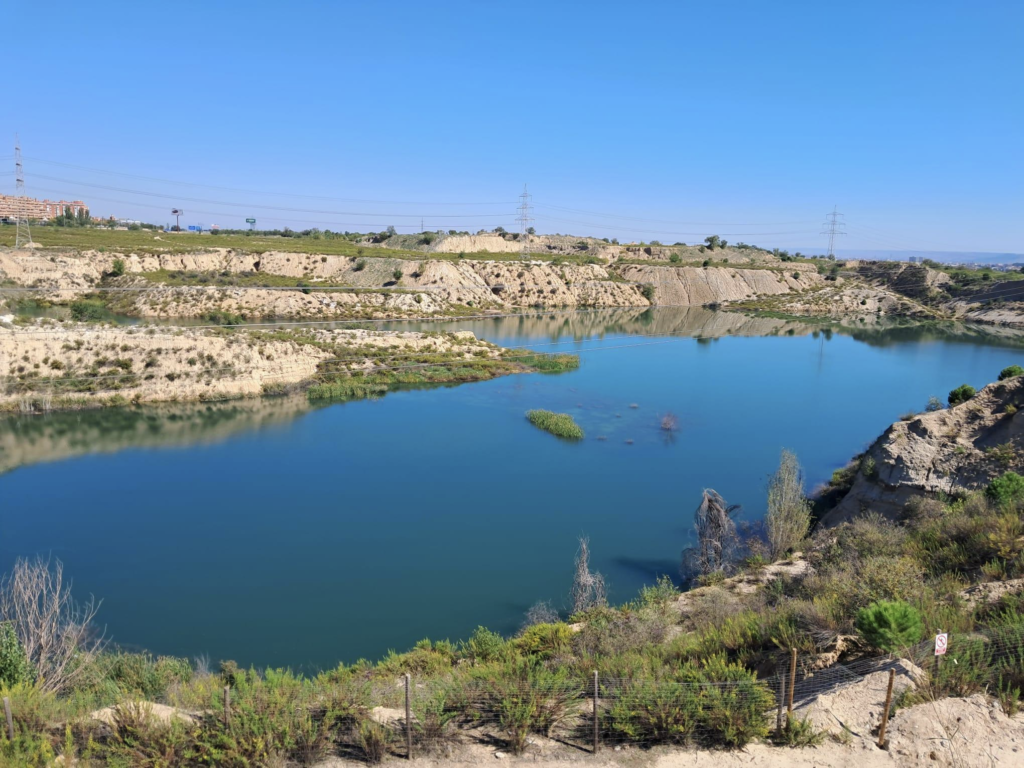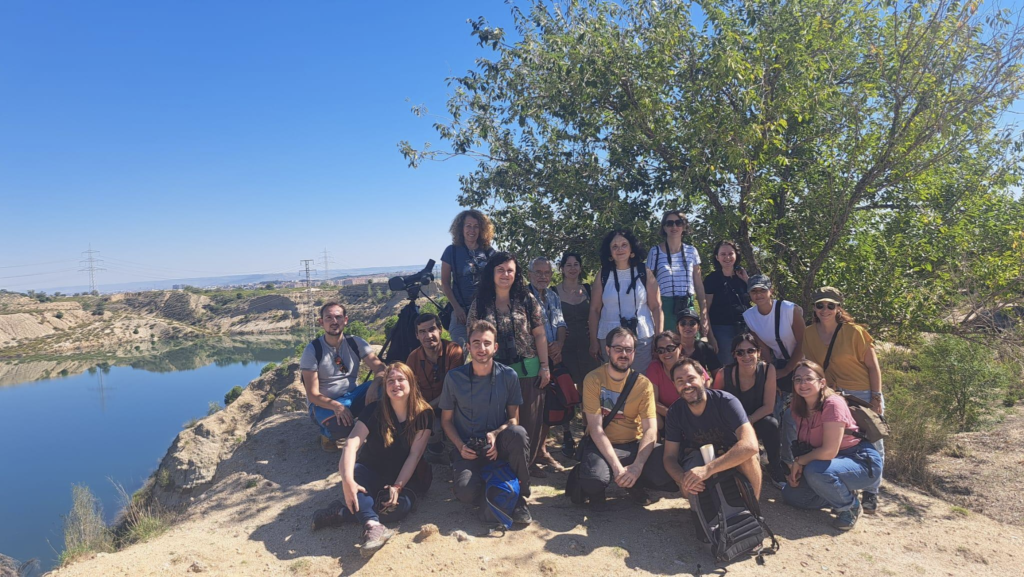The protection of the Ambroz Lagoons: line of work of the legal clinic of the Autonomous University of Madrid
Blanca Rodríguez-Chaves Mimbrero, UAM
2024
In the 2022-2023 academic year, the Legal Clinic of the Autonomous University of Madrid, within the framework of Speak4Nature, has developed the project “Protection of the Ambroz Lagoons” (San Blas-Canillejas District) with the collaboration of SEO-BirdLife, WWF, Ecologists in Action and SECEM.

In the municipality of Madrid itself (in the district of San Blas-Canillejas) we find the Lagunas de Ambroz. It is an artificial wetland created after the cessation of exploitation almost 14 years ago of an open-pit sepiolite mine. From that moment on, a phenomenon of renaturalization took place with the arrival of bird species typical of this lake environment and mammals and reptiles that have adapted to the environment. The lagoons are home to a very relevant biodiversity that has been collected in the “Biodiversity Report of the Ambroz Lagoons and their environment 2020-2022”. This document includes 449 taxa of flora, 1,080 species of invertebrates, 156 species of birds, 13 species of mammals, 11 species of amphibians and reptiles and 55 species of fungi. Of the 146 bird species recorded in the wetland, 23 are threatened. This inventory of species has been possible thanks to the voluntary effort of people who have done citizen science, recording in recent years all the biodiversity detected in the Ambroz Lagoons and their surroundings, with the support of the scientific community.
Despite the enormous natural wealth and environmental services that these Ambroz Lagoons provide to the Municipality of Madrid and the Autonomous Community of Madrid, the passivity in terms of their protection is evident. The aim is to restart the mining operation, which already has obtained a favourable Environmental Impact Statement and is pending the granting of authorisation for mining activity in the Community of Madrid. The Plenary Session of the Madrid City Council approved on March 29, 2022, a series of measures to stop the constant degradation by which the Ambroz Lagoons and their surroundings are affected. The main reason is the lack of control of the constant illegal dumping that poses an environmental threat to this landscape of high natural value. However, the lagoons, not even the “Laguna Grande de Ambroz” (surface: 8 ha and depth: 10-15 m) were not included in the Catalogue of Wetlands of the Community of Madrid nor in the Tagus Hydrological Plan of the third cycle (2022-2027).
However, today it can be said that the Ambroz Lagoons, in San Blas-Canillejas, are one of the points of greatest natural interest in the city of Madrid. As they are wedged between the M-40 and the R-3, access is not very easy. This has allowed them to go almost unnoticed except for residents of the area and birdwatchers, which has led to their renaturalization.
The work carried out in the Legal Clinic has focused, mainly, on the study of the legal qualification of lagoons under the legal regime of inland waters, as well as under the regulation for the protection of wetlands, so that these waters and all the biodiversity they host enjoy maximum protection. The conclusion reached is that the Ambroz Lagoons from a legal point of view should be classified as artificial bodies of water, in accordance with Directive 2000/60/EC, the Spanish Water Law of 2001 and Order ARM/2656/2008. Since the origin is groundwater, they are considered part of the Public Hydraulic Domain. It should be remembered that when the sepiolite deposit was exploited, the water table was drilled through, causing the water from the aquifer to gush out and fill the open-cast mine hole after the activity ceased. This consideration of the sheets of water as part of the public hydraulic domain is what can grant more protection to the lagoons. The Tagus Hydrographic Confederation does not ignore them and includes them in the Tagus Hydrological Plan. In order to achieve this recognition by the Tagus Hydrographic Confederation, intensive work is being done.
On the other hand, it is intended that these Lagoons be classified as Wetlands and included in the Catalogue of Wetlands of the Community of Madrid, in application of RAMSAR and Law 7/1990 on the Protection of Reservoirs and Wetlands of the Community of Madrid. According to these rules, wetlands can be of artificial origin and the element that most clearly distinguishes them is that they have been identified as having a presence of significant biodiversity as it was demonstrated in the Ambroz Lagoons. For this reason, work is being done to include them in the Catalogue of Wetlands of the Community of Madrid and, subsequently, in the Spanish Inventory of Wetlands.
The Ambroz wetland is an accident that has been converted into a geological jewel. A diamond in the rough that has a very important environmental value for the fight against Climate Change from mitigation and adaptation for all the people who live in the Municipality of Madrid and throughout the Community of Madrid.
From the Legal Clinic of the Autonomous University of Madrid, within the framework of the Speak4Nature project, we will continue working until the protection, conservation and restoration of the Ambroz Lagoons is achieved.


Further readings and resources:
Autores varios (2022) Informe de biodiversidad 2020-22 “Los ecosistemas de Las Lagunas de Ambroz y su entorno”: https://seo.org/wp-content/uploads/2022/07/Los-ecosistemas-de-Las-Lagunas-de-Ambroz-y-su-entorno.Informe-biodiversidad-20-22.pdf
Ceballos Moreno, M (2001) La problemática jurídico-administrativa de las zonas húmedas, Humedales Mediterráneos, 1 (2001).
SEO Birdlife (2022): https://seo.org/las-lagunas-de-ambroz-un-paso-mas-cerca-de-su-proteccion/
